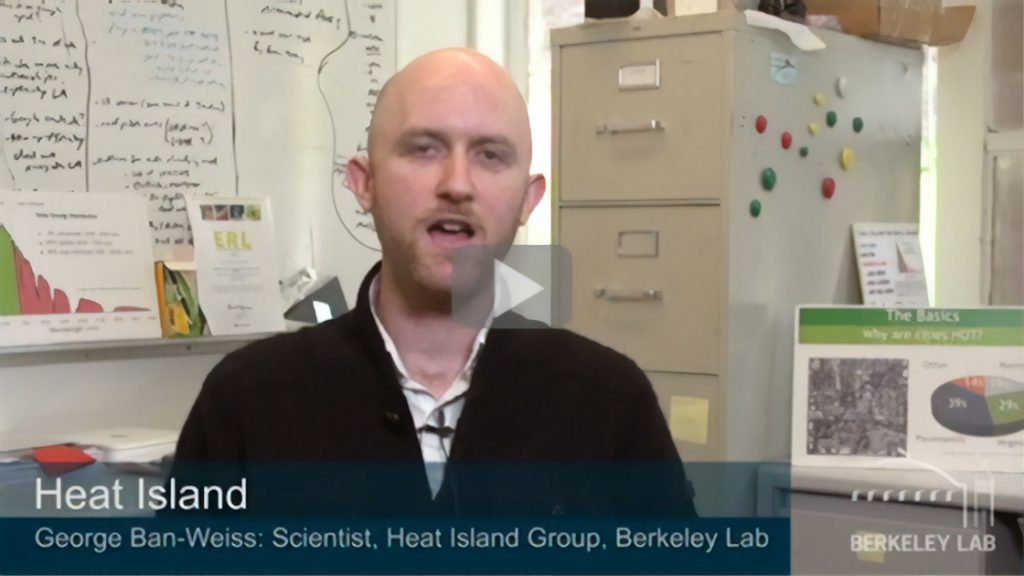Additional Roofing Resources
How PVC (Vinyl) Membrane & Cool Roofing Positively Affect Urban Environments
Thermoplastic PVC membrane roofing can improve the energy efficiency of buildings while positively impacting the quality of the urban environment.
In full sun, the surface of a black roof may experience a temperature rise of as much as 90 degrees F, reaching midday temperatures of 150-190 degrees F. A white reflective roof typically increases only 10-25 degrees F above ambient temperature under the same conditions.
That’s why owners of large commercial, industrial and multi-family residential buildings are turning to white reflective PVC roofing membranes and planted or green roofs to reduce peak energy demand by as much as 10 percent and control energy costs. Reflective single-ply roof systems also enhance the life expectancy of both the membrane and the building cooling equipment. A further benefit of cool roofing membranes: improved thermal efficiency of whatever roof insulation is required. As the temperature increases, the thermal conductivity of the insulation increases.
When a roof can deliver high solar reflectance (or albedo) and thermal emittance values, it is known as a cool roof. A vinyl roof can reflect three-quarters of the sun’s rays – usually far more – and emit 70 or more percent of the solar radiation absorbed by the building envelope. Asphalt built-up roofs (BUR), by comparison, reflect between 6 percent and 26 percent of solar radiation.
Cool roofs also reduce the urban heat island effect, lowering surrounding air temperature and reducing smog formation.The Heat Island Group at Lawrence Berkeley National Laboratory works to cool buildings, cities, and the planet by making roofs, pavements, and cars cooler in the sun. For more information, visit heatisland.lbl.gov.

Reflective roofing technologies are increasingly included in federal, state and local energy codes, and specifiers are consulting the Cool Roof Rating Council’s (CRRC) product rating database to help make purchasing decisions.
For a history of cool roofing standards, see Evolution of Cool-Roof Standards in the US ![]() [2.5 MB].
[2.5 MB].
To reduce electric power generation and associated air emissions, more government entities and utilities are offering incentives and rebates when these roofing systems are installed. In addition, credits associated with reflective vinyl roofing or planted roofs can help achieve certification under the U.S. Green Building Council’s LEED (Leadership in Energy and Environmental Design) Green Building Rating System®. Here, a third measure, the solar reflectance index (SRI), is evaluated prior to assigning credit. The Green Building Initiative’s Green Globes® program gives points towards Globes ratings for 100 percent roof coverage with either vegetation or highly reflective materials or both.
| Solar Reflectance1 | Emittance2 | Solar Reflectance Index3 | |
|---|---|---|---|
| ANSI/GBI 01-2010 | |||
| Low slope | 78 | ||
| ASHRAE Standard 189.1 | |||
| Low slope | 78 | ||
| ENERGY STAR® | |||
| Low slope4 Initial Aged5 |
0.65 0.50 |
||
| Steep slope Initial Aged5 |
0.25 0.15 |
||
| Green Globes® | |||
| 0.65 | 0.90 | 787 | |
| California Title 246 | |||
| Low slope Aged5 |
0.55 | 0.75 | 649 |
| USGBC LEED® | |||
| Low slope Steep slope |
787 29 |
||
- Also known as albedo, a measure of a material’s ability to reflect sunlight (including the visible, infrared and ultraviolet wavelengths), expressed either as a decimal fraction or a percentage. A value of 0 indicates the surface absorbs all solar radiation, and a value of 1 represents total reflectivity.
- The ability of a material to release absorbed (non-reflected) heat, expressed either as a decimal fraction or a percentage.
- A value that incorporates both solar reflectance and emittance in a single value to represent a material’s temperature in the sun. SRI quantifies how hot a surface would get relative to standard black and standard white surfaces. It is defined such that a standard black (reflectance 0.05, emittance 0.90) is 0 and a standard white (reflectance 0.80, emittance 0.90) is 100.
- A roof surface having a maximum slope of 2 inches rise for 12 inches run.
- Three years’ exposure.
- Requirement for conditioned spaces only.
- Roughly equivalent to, for example, 0.65 reflectance and 0.90 thermal emittance, although a number of different combinations of reflectance and emittance can achieve this value.
- Effective August 1, 2009; may not apply in every climate zone
Net annual energy savings for cool roof systems are typical even in northern climates. Cool roofs can have more impact on energy cost than energy use, cutting consumption during peak power demand when the rates are the highest and offsetting any minimal wintertime increases in use when there is less sunlight to reflect. The image below shows that wintertime horizontal solar irradiance is typically 20-35 percent of summer irradiance in mainland northern states. A horizontal surface in the north receives 3-5 times more daily sun in summer than in winter.

| Characteristics of Common Roofing Systems1 | Solar Reflectance | Emittance | Solar Reflectance Index |
|---|---|---|---|
| Black EPDM | 0.06 | 0.86 | -1 |
| Smooth Bitumen | 0.06 | 0.86 | -1 |
| White Granular Surface Bitumen | 0.26 | 0.92 | 28 |
| Dark Gravel on BUR | 0.12 | 0.9 | 9 |
| Light Gravel on BUR | 0.34 | 0.9 | 37 |
| White Thermoplastic (Vinyl) | 0.83 | 0.92 | 104 |
- Lawrence Berkeley National Laboratory Cool Roofing Materials Database

